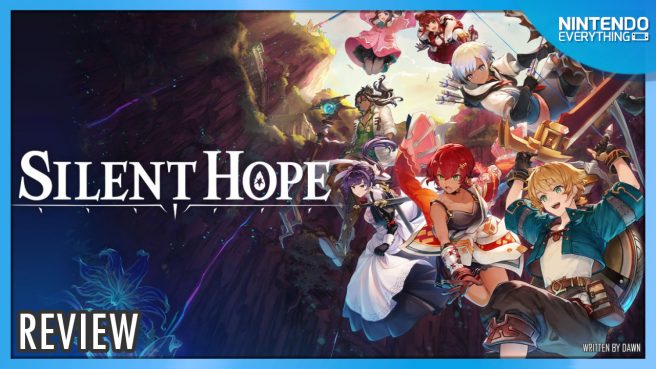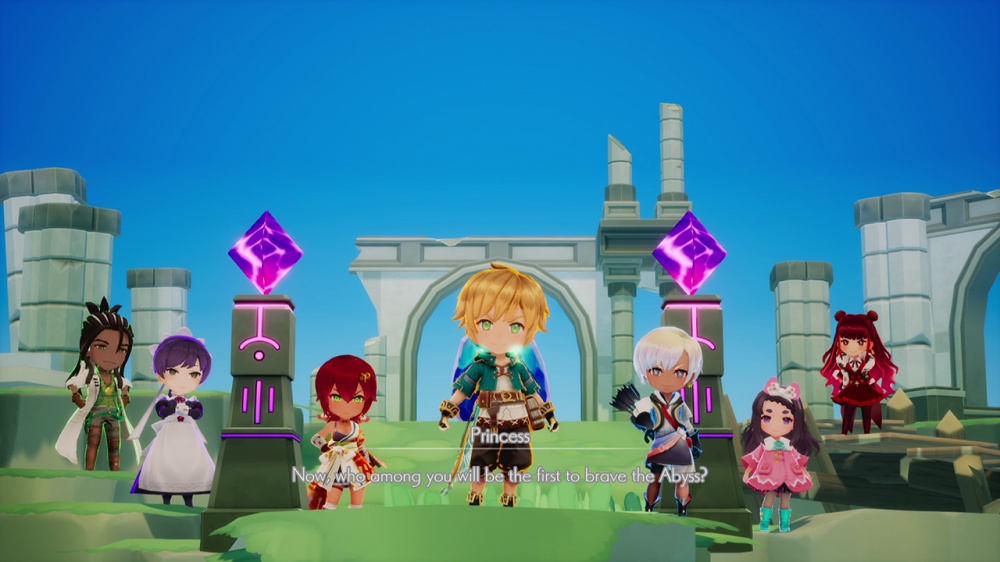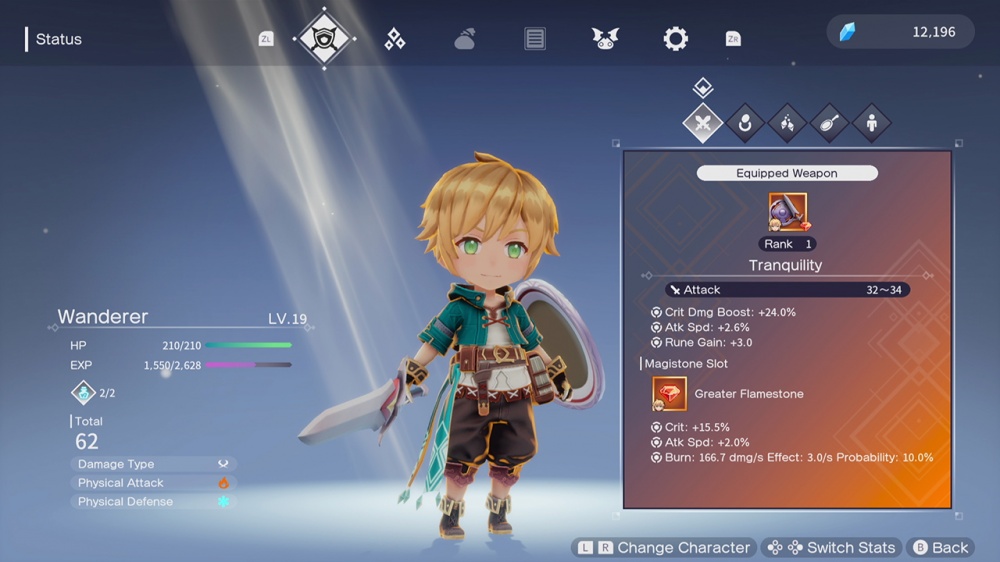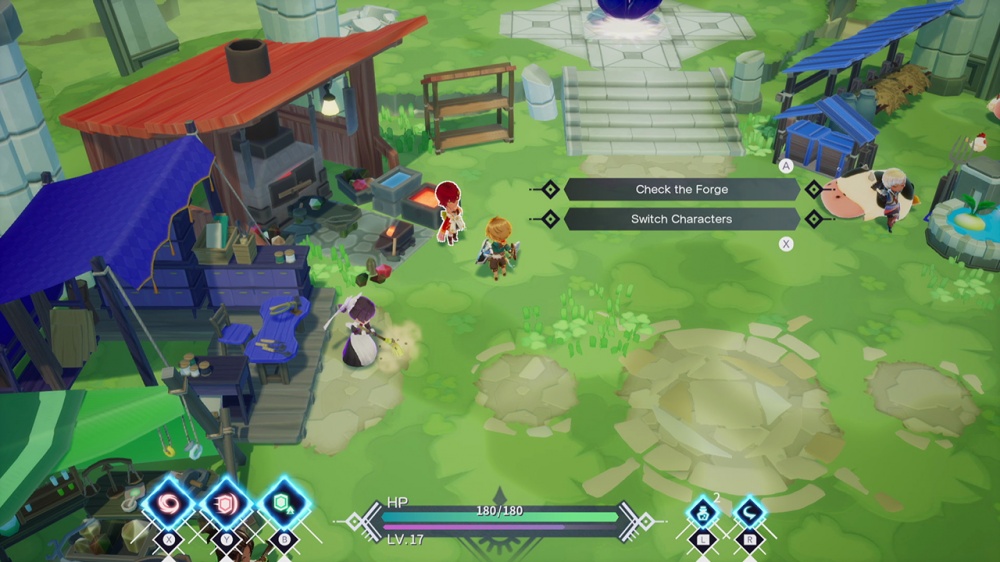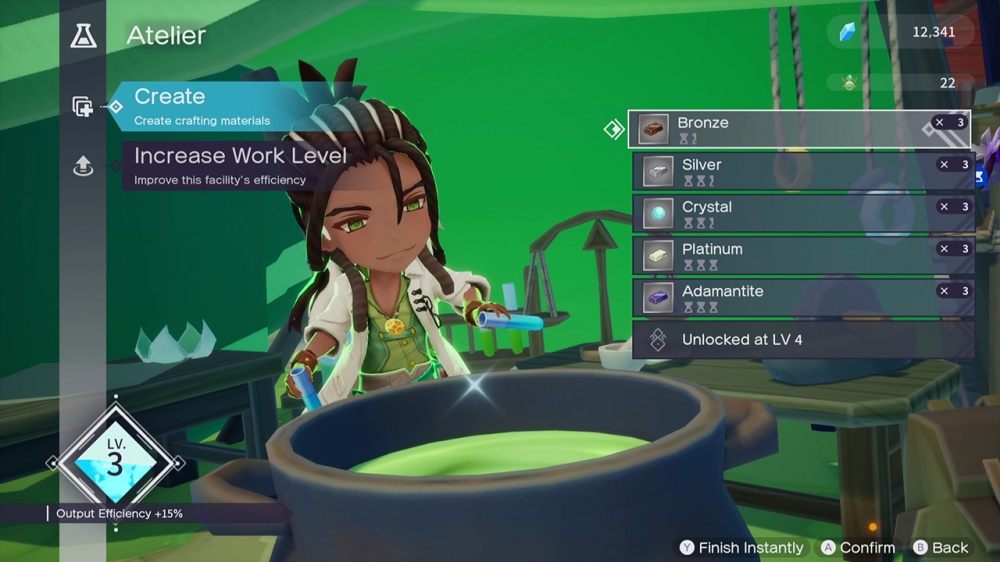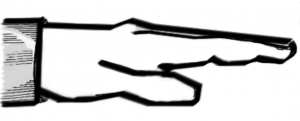System: Switch
Release date: October 3, 2023
Developer: Marvelous
Publisher: XSEED
Some of the most recognizable video games in history have had silent protagonists, and although their success might not have been determined by this choice, it is nonetheless a very effective mechanic to facilitate player immersion. In the absence of a defined personality, the imagination is free to run wild, and the player can insert themselves into the game’s world and story using that character as a proxy. However, what if your player character’s silence wasn’t a choice? Silent Hope, the latest game from XSEED Games and Marvelous, takes this idea as its basic premise and thrusts you into the heart of the mystery, and while its gameplay is fun and enjoyable in short bursts, there is less to be said about it the longer that you play.
In the aftermath of a mysterious calamity, the people of the kingdom have been robbed of their ability to speak by their King, who sealed it away using a powerful magic and then hurled himself into the Abyss. His daughter, the princess, cried until her tears encased her in a crystal teardrop. Time passed, and the circumstances that caused these events have been forgotten. Now, seven heroes have appeared before the princess, ready to answer her call for help and uncover the mystery behind those events.
Silent Hope is narrated by the princess, who is the only one who retains the ability to speak in the aftermath of the calamity. As you progress through the Abyss she will occasionally provide some commentary on events as she remembers them, and the area of the Abyss that you’re in and how this corresponds to those events. After defeating a boss at the end of the level you’ll also find steles carved with words from the king (also narrated) which shed more light on his motivations. I found that this piecemeal approach to storytelling works well for the game, and it gives a little added meaning to each area you explore.
Because she is the only character who can actually speak, you’ll get a real sense of the princess’ personality. She rambles, repeats herself (although outside of story events this is due to repeated voice lines, which I disabled after hearing the same line three times in a row just swapping between menu screens) and presents a very authentic personality, even if it’s one you may not necessarily like. In the absence of dialogue, your player characters express themselves more through their actions and manage to feel like distinct characters thanks to their short backstories and chosen professions in camp: each one will operate a different facility, and will swap around depending on who you’re currently controlling. It creates a pleasant atmosphere of community and I found it to feel quite cozy during my playthrough, as the princess would chatter away happily in the background while my characters worked in a silence that would have felt distinctly eerie otherwise.
Silent Hope is an action RPG with an isometric viewpoint similar to the earlier Rune Factory titles. You’ll spend the majority of your time in the Abyss, a multi-layered dungeon composed of five layers, with an additional two being unlocked in the postgame. Each layer has multiple floors, and your goal is to find the exit to progress steadily downwards and defeat the boss residing on the bottom floor. Along the way you’ll find various resources that can be used to craft better equipment and, of course, enemies that will actively try to hamper your progress. Combat is your basic hack-and-slash affair, with enemies having very clearly telegraphed attacks that afford you more than enough time to dodge, weaknesses for you to exploit, and unique item drops that mean you will be fighting them far more than you might wish to in order to progress.
There is some variety to be found on each floor, which can range in size from being small and linear (usually these have combat trials with waves of enemies in small arenas) to slightly larger and more complex, with moles that will take you to other points if you interact with them. You may also need to find a crystal switch from time to time in order to unlock gates to progress, avoid traps (or use them to your advantage, because they will also damage enemies), and occasionally face off against mini bosses. Most floors will have sub-objectives for you to complete for an additional challenge and experience if you choose; for instance, you may be tasked with reaching the end of the floor without using a healing potion, or defeating a number of enemies before progressing. There are also Rift Memories, which lead to smaller areas with enemies significantly stronger than those you’ll normally encounter, but are more likely to drop items and higher rank Mementos than normal. Although it quickly becomes repetitive over extended play sessions, most floors can be completed within ten minutes at most, and there are checkpoints every few floors in the form of campfires that you can warp to if you choose to exit the dungeon early.
Time not spent in the Abyss will be spent back at your Base Camp, which has several basic facilities to help support your adventure. You can craft weapons and accessories at the blacksmith using items acquired from enemies and harvest points in the Abyss, although the latter will need to be refined before they can be used. This has a preparation time which advances as you explore, although if you need the item immediately you can pay a small sum of Runes, the game’s currency, to have it finished there and then. I never found that I was stuck waiting for items to finish and almost-always had the Runes needed to craft what I needed instantly, so while this system seems a little out of place and more reminiscent of something you’d find in a free-to-play mobile title it isn’t overly detrimental. You can also prepare ingredients to use in meals that apply small bonuses during your current Abyss run, although these are quite negligible for the amount of ingredients that they need. Interacting with the princess’ crystal will allow you to change classes if possible, and also redeem rewards for Challenge Missions, many of which you’ll complete naturally as you progress, although some like the time trials will require a little more active effort to accomplish.
Silent Hope features seven playable characters, each with their own unique weapon and play style. If you’ve ever played an RPG before you’ll be familiar with the conventions: the heavy-hitting Warrior, the speedy Rogue, the long-range Caster, and so on. Each character has three classes, which have three skills that can be boosted with skill points gained as you level, and mixed up to suit your preferences. For example, once you unlock the Fighter’s second class, Battle Master, you can use a mixture of skills from both classes. You can reset your skill points at any time, even during the middle of combat, letting you adjust your tactics as and when you please. One thing that stood out to me in particular was that each has their own unique dodge mechanic as well: for instance, the Fighter will do a quick step that covers only a little distance but has a short cooldown, whereas the Rogue will teleport a much greater distance with a slightly longer cooldown. It gives them a nice personal touch which makes them feel more than your standard generic RPG classes and makes them all move quite differently.
Where you would normally pick one character to play as for the entire game, one of Silent Hope’s core gameplay mechanics is to allow you to swap between characters. This is both to its credit and to its detriment, because the way the game tries to force you into using multiple characters can actively hamper overall game progression. It’s entirely possible to play through the game using only a single character, but the game will go out of its way to make this as difficult as possible.
Mementos, which serve as blueprints for equipment, are dropped randomly from enemies and treasure chests, and you’ll be getting these constantly for all seven characters regardless of who you use. These need to be crafted using a mixture of materials dropped from monsters and those gathered from the various points scattered across each floor, and resource management quickly becomes an issue if you intend to use every character the way the game wants you to, because they all need the same items. Equipment becomes obsolete too quickly to make the time you’ll need to invest in preparing it all feel worthwhile.
However, the biggest problem with Silent Hope is that each character needs to be leveled separately. Having experience points confined to the character that you’re using feels particularly rigid when Memento drops and resource requirements are shared across characters. Although levels are not quite as important in Silent Hope as the equipment that you use, they do provide boosts to stats and skill points, and it takes a long time to level up. A low level character with a high rank weapon will still be killed in one or two hits by more powerful enemies, forcing you to go through floors with weaker enemies to bring them up to par unless you rotate your characters constantly as you progress.
As you will be at the mercy of RNG for drops from monsters to create new equipment, it is highly likely you will need to run through levels multiple times to keep every character fully outfitted and combat ready. This is where Silent Hope’s level design and simple combat works against it, because over extended play sessions it’s an incredibly tedious game to play if you intend to use every character. Progression slows to a crawl, and with each new level of the Abyss you will need to upgrade your gear to the next rank or be prepared for a grueling war of attrition against enemies, who will come at you en masse, actively chase you across the floor until you find the exit, and will deal significantly more damage. Doing this for even three or four characters requires an extremely high level of patience.
Silent Hope is a game that is at odds with itself. It clearly wants you to use all of its characters, and facilitates this by bombarding you with Mementos for all of them, and keeping resource costs the same for each of them, meaning you won’t need to grind for specific resources to use a certain character. But its approach to leveling runs counter-productive to this and forces the grind it seems to be trying to prevent, because you’ll need to play as that character to gain levels. The end result is that progression either slows to a crawl as you try and accommodate the game, or you face some artificial difficulty spikes when you don’t get Memento drops for the characters you’re using and your equipment becomes obsolete, and the characters you have better equipment for are too underpowered to use it, forcing you to either continue playing in the hope you’ll get gear for the characters you are using, or revisit past floors of the Abyss for the sole purpose of grinding levels (a slow and tedious process) for that character so that they’re usable.
Silent Hope has an attractive visual style, with cute chibi character models and brightly contrasting colors that help to generate a real sense of atmosphere on each level of the Abyss, which despite feeling very repetitive due to the level design all manage to look distinct thanks to the color scheme and various set pieces, from the almost cheerful autumnal ambience of the Festival of Sorrow to the gloomy, crumbling ruins of the Dying Castle. Anyone who has played a Rune Factory title will find many enemies to be instantly recognizable, although unfortunately the game opts to reskin them between its various floors, adding to the sense of repetition.
Each floor has its own unique music theme which helps to make them feel distinct and set the tone, becoming steadily darker and more ominous the further you progress. The game also runs well on the Switch; I only noticed the occasional slight lag as the game loaded the next floor of the Abyss, causing my falling character to pause for a fraction of a second. The overall sense I had from the presentation was akin to that of a storybook, which suited the game’s story and very traditional RPG classes and character design.
The Verdict
Silent Hope isn’t a game that most people will be able to play for long periods of time. Its more frustrating design choices offset its flexibility and force the grind it seems to have been trying to avoid, and it becomes extremely repetitive very quickly, with a forced slow rate of progression that doesn’t feel particularly rewarding. However, it’s the perfect game to pick up in short bursts, and if you’ve been craving a simple action RPG that you don’t need to put too much thought into you could do much worse than this, as its combat is fun and frantic, and the variety of characters at your disposal allow for numerous different approaches to its challenges. Combined with a robust postgame, and there is hours of content here to keep you engaged. But this is a game that requires you to pace yourself and is heavily reliant on RNG for progression, especially if you don’t intend to use every character at your disposal.
Silent Hope copy provided by the publisher for the purposes of this review.
